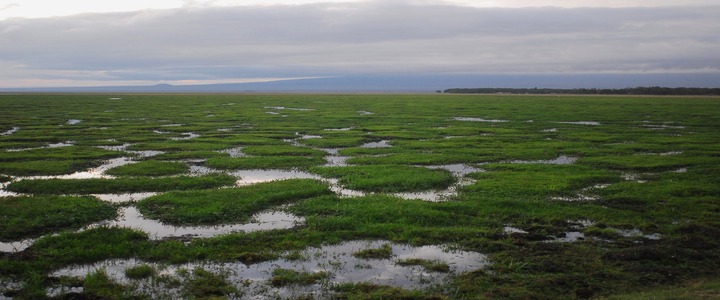The Future of the Climate Crisis Under Scotland’s Green-Cooperation Government
As one of only three parties in Scotland to increase their vote share from the last election, the environmentally-focused Scottish Greens secured enough seats in the 2021 national elections to put themselves in a position of power for the first time in UK history.
With the more centrist Scottish National Party falling one seat short of an overall majority, they turned to the Greens for assistance. However, instead of forming a coalition – in keeping with historically successful Scottish coalition governments, like the Labour-Liberal Democrat coalition of 1999-2007 – the SNP and Scottish Greens have styled their ‘cooperation agreement’ on that which the New Zealand Greens have with Jacinda Ardern’s government.
As the Scottish National Party and Scottish Greens seek to sign their agreement and present it to the world by the end of this month (August 2021), the question remains: what does the future of the climate crisis in Scotland look like under this new government? Without resorting to speculation, we’ll examine the proposals being made in both the Scottish Greens manifesto and the ‘cooperation agreement’ document, which you can read in more detail here, in order to answer the question.
Cambo Oil Field and Renewable Alternatives
Despite there being 5.7 billion barrels of oil and gas in the UK’s already-operating fields (which alone would push the UK beyond the limits set out in the Paris Climate Agreement), there is currently ongoing speculation as to whether the UK government will approve plans to open a new offshore oil field in the Cambo area of the North Sea, near Shetland. The Scottish National Party, under pressure from the Greens, have challenged the Conservative UK government on their position on oil and gas, though have not specifically opposed plans for Cambo.
The Scottish Greens, in contrast, would rather focus their efforts on renewable energy, especially following 2020 – the first year in the UK’s history during which production of renewable electricity overtook that of fossil fuel-generated electricity. There is pressure from the Greens to invest heavily in offshore and onshore wind, as well as in small-scale hydropower and the tidal-power sector.
Scotland, naturally a windy country, is arguably a perfect site for the harvesting of renewable electricity from wind. Indeed, the Scottish Greens believe that Scotland’s “enviable renewable energy resources” can be utilised for the betterment of the country, if first the shortfalls in onshore wind technology are addressed.
One of the major issues facing the wind power sector is that advances in technology and turbine design can often outpace the speed at which governments are willing to build new wind farms. In other words, old, outdated wind turbines dominate Scotland’s countryside, and greatly limit the efficiency of the sector. The Scottish Greens promise to upgrade existing wind farms, replacing these outdated models with “fewer, more powerful models” which should radically improve both the efficiency of the wind power sector in Scotland, and the number of homes which can be powered.
Public Transport and Expansion of the Road Network in Scotland
For a few years now, one of the largest road-expansion projects in Scotland’ recent history – the dualling of the A9, which conveys travellers from south to north, right through the middle of the country’s wildest areas – has been ongoing. Naturally, the Scottish Greens are opposed to any further road-building projects. However, this is a point of contention between the two ‘cooperating’ parties, and plans for further road network expansion may be out of the Greens’ hands.
To combat the damaging effect which more roads (and thus more traffic) would have on Scotland’s environment and the world’s climate, the Scottish Greens are proposing a detailed green infrastructure programme for the next five years. Proposed investments include “£3.2bn in public transport, including the first stage of the Rail for All programme, [and] a 20-year £22bn programme to renew our railways, supporting at least 16,800 jobs.”
As global populations continue to boom, whilst communities become ever more fractious, we are seeing more and more cars on the road. The fossil fuel emissions of these cars are known to be one of the worst contributors to the climate crisis, the destruction of the planet’s ozone layer, and the warming of the planet. Making public transport more efficient, greener, and more accessible to all is the primary method with which environmentally-conscious parties and lobbyists around the world are attempting to combat car-use.
Additionally, according to their manifesto, the Scottish Greens would like to introduce “more Low Emission Zones in cities; and [ban] the sale of new petrol and diesel cars from 2026.” Not only would such an enforcement help to reduce air pollution in cities, which can lead to all sorts of health conditions, but would aid the efforts to meet Net Zero carbon-emission targets.
Just Transition
Of course, with the arrival of the Scottish Greens as the first green party in power in the UK’s history, there exist fears surrounding job security, especially in the fossil-fuel sector.
Scotland, along with a slew of other countries around the world, signed the Paris Climate agreement in 2015, which set out a list of objectives to help combat the global climate crisis. However, Scotland has missed its climate targets two years in a row (as of 2021). As such, there is pressure from groups like the Scottish Greens to ramp up efforts in green infrastructure and plans for renewable energy.
At the same time, the Scottish Greens seem to understand the fears of the working person. They have set out to establish their ‘green recovery’ from the economically-destructive effects of the Covid-19 pandemic in a ‘just manner’, or, in their words: “a managed process of economic change that is fair and equitable and that means no one is left behind.”
The future of Scotland’s climate policy and renewable energy grid
Without resorting to conjecture, it’s hard to say what the future of climate policy and renewable energy in Scotland will actually look like. Though it is inarguably a boon to environmentally-conscious Scots that their country hosts the first empowered Green party in the UK, whether the inclusion of a nominal two MSPs (Members of Scottish Parliament) will tip the balance is yet to be seen.
Certainly, there exists much media speculation surrounding the announcement of the agreement between the Scottish National Party and Scottish Greens, considering that it is being made just three weeks before Scotland’s largest city, Glasgow, plays host to COP26 (the 2021 United Nations Climate Change Conference).
The Scottish Greens’ manifesto is full of promises, big ideas, and an understanding that dramatic change (“a fundamental transformation of our economy and society… every industry, every part of our economy and every individual will need to rise to the challenge”) is needed, and needed urgently. However, without a full coalition agreement, and with the Scottish National Party still holding a near-majority in parliament, there is the feeling in Scotland that climate policy will continue to not go far enough, whilst the monetary promise of fossil fuels will win out over the necessity for greater reliance on renewable energy.





















